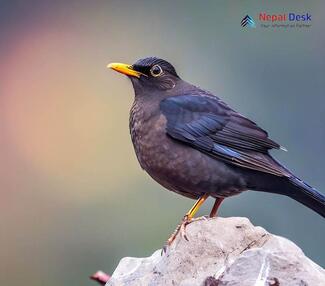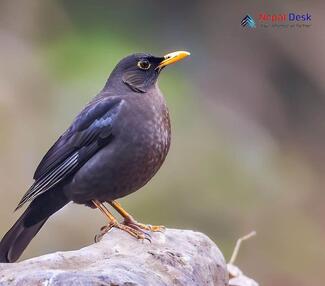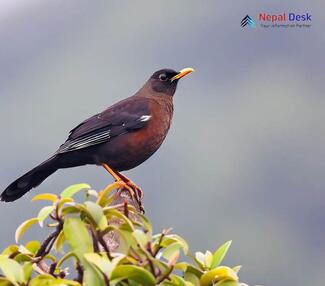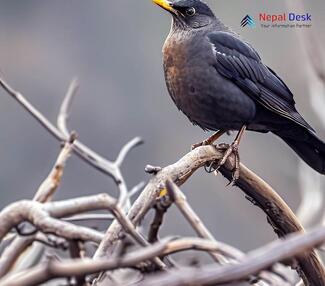The Himalayan Blackbird (Turdus maximus) is a captivating bird species that has captured the interest of bird enthusiasts and nature lovers alike. With its striking appearance and unique characteristics, this fascinating bird is a true gem of the avian world. In this article, we'll take a closer look at the taxonomy, physical features, habitat, and diet of the Himalayan Blackbird and its presence in Nepal.
Taxonomy
Belonging to the family Turdidae and genus Turdus, the Himalayan Blackbird is one of the many species in the large and diverse thrush family. Categorized under class Aves and order Passeriformes, this impressive bird shares its family with other well-known thrushes such as the American Robin and the Eurasian Blackbird.
Physical Features
The Himalayan Blackbird boasts a predominantly black plumage with a distinctive yellow eye-ring and beak. Males exhibit a glossy black color, whereas females sport a slightly browner hue. Adult males can reach a length of 25-28 cm (9.8-11 in) and weigh around 110-135 grams. Although similar to its close relative—the Eurasian Blackbird—subtle differences in appearance set them apart from each other.
Habitat
These birds primarily inhabit montane forests and subtropical or tropical moist montane regions. Their preferred elevation ranges between 1,800 to 3,900 meters above sea level. As they're accustomed to high altitudes, they can be found throughout the Himalayas, stretching from Afghanistan to Bhutan and even as far as Vietnam.
Diet
Primarily insectivorous in nature, Himalayan Blackbirds are known to feast on a variety of insects such as beetles, caterpillars, and ants. They also consume fruits, including berries and wild cherries. Foraging mostly on the forest floor, they use their strong beaks to dig through soil and leaf litter in search of food.
Presence in Nepal
Nepal is home to a significant population of Himalayan Blackbirds. They can be spotted in national parks such as Langtang, Sagarmatha, and Annapurna Conservation Area. Birdwatching enthusiasts visiting Nepal during the breeding season between June and August may encounter these captivating birds nesting amidst beautiful rhododendron forests.
Fun Fact:
The Himalayan Blackbird is known for its enchanting song—a series of rich, melodious notes that can echo through the valleys. During the breeding season, males frequently sing from prominent perches, serenading potential mates with their captivating tunes.
With its striking features, intriguing behavior, and awe-inspiring habitat, the Himalayan Blackbird is undoubtedly an extraordinary bird species worthy of admiration. Exploring the rich biodiversity within the Himalayas allows us to appreciate these magnificent creatures and highlights the importance of conserving their natural habitats for future generations to enjoy.




